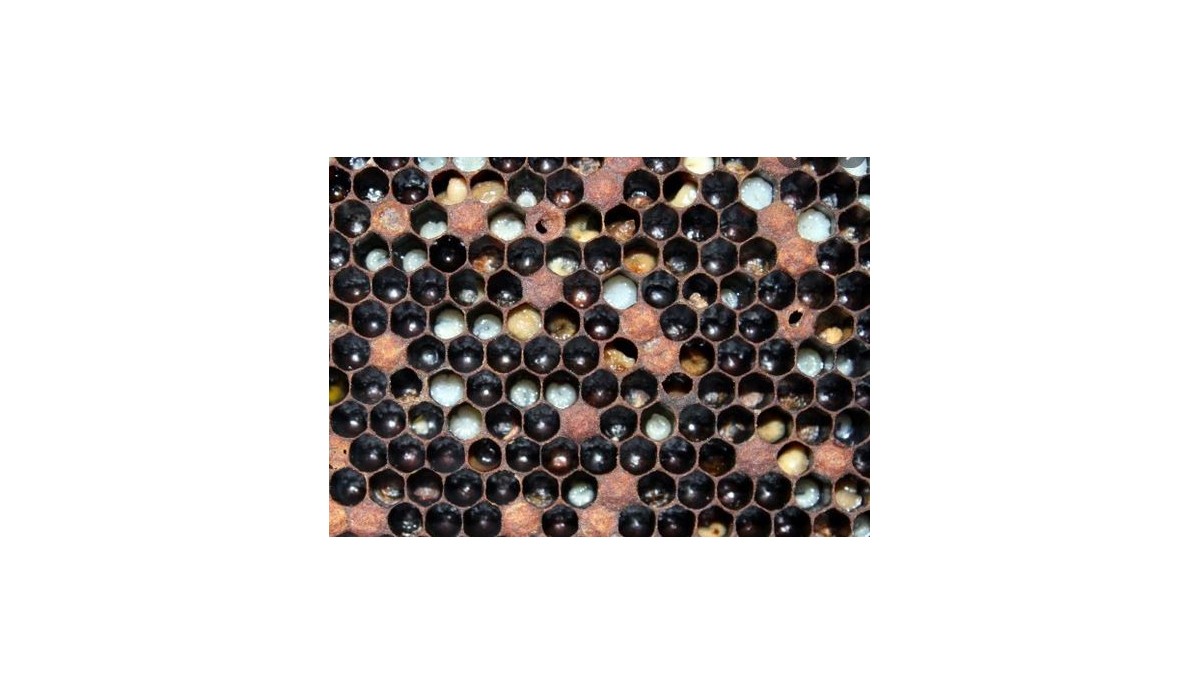Foulbrood europea

Diseases that affect bees (PART 1)
First, it must be said that the European foulbrood (commonly known as "benign foulbrood) is a disease that affects bees but" is not one of the most serious. " That is, the bees that are responsible for cleaning in the hive detect which larvae have been infected with the European foulbrood and extract these larvae with relative ease.
Currently, European foulbrood is present in all countries of the world and causes serious economic damage depending on how intense the focus of infection of each apiary in particular.
In English, European foulbrood is known as European Foulbrood (EFB) and affects bee pups that are 2 or 3 days old, causing larvae to die before they can metamorphosis (affects the middle intestine and to the ventricle of the developing larvae causing their death).
The bacterium that causes European foulbrood is Melissococcus pluton and is quite resistant: it survives at 1 year to desiccation, resistant for 20 hours in direct exposure to the sun's rays, is resistant to the acidity of royal jelly (3/4 ), survive 25 days of rot at room temperature. This bacterium develops in a pH range of 7 to 9 with an optimum temperature of 32 ° C.
But how are larvae of European foulbrood infected and infected?
The larva is infected by eating contaminated food, affecting and killing it. The dead larva becomes a yellowish-brown mass with the cell still open. The cleaning bees, when extracting the dead larvae of the cells, spread the germs of European foulbrood throughout the hive. Dead larvae in cells without opercular cells have a sour or rotting smell (we can tell when we open the hive). We can also perceive the smell of sour and rotting in the hive's bite.
European foulbrood germs can spread to other hives from the infected hive if there is pillage of sick hives by bees from other healthy hives. It may also be the case that a bee that has the germs of European foulbrood has a flight or drift error, and ends up in another hive and infects it. Similarly, it may also be the case that we give contaminated food to our bees and also end up contracting this disease. Also, you have to pay special attention when buying or selling live material such as bees and queen bees.
The European foulbrood, initially does not show visible symptoms in addition to the smell of sour and rotten when opening the hive or in the piquera. We can also see unclosed cells filled with a yellowish brown viscous mass. It will be after that we can see how the European foulbrood causes more serious effects and the bee colony is losing population (since new larvae die and there is no replacement in the bee population).
The larvae affected by European foulbrood are transformed into a mass of color that ranges from gray to dark brown and are easy to extract by cleaning bees. In the most severe cases of European foulbrood infection, the cleaning bees do not have sufficient resources to be able to remove the dead larvae and the larvae end up becoming a kind of dry scales.
How can we treat hives that have been infected with European foulbrood?
First, it must be said that it is essential to have a veterinarian before applying any type of veterinary treatment in the apiary, since bees are animals that produce products intended for human consumption and must comply with the regulations applicable to each territory.
If the beekeeper detects that the European foulbrood is already at a very advanced stage and has already affected most of the bee larvae, then it will be more advisable to destroy by fire (applying all relevant safety measures).
Treatments and medications to treat European foulbrood have to be supervised by a veterinarian and purchased with a veterinary prescription at authorized veterinary drug management centers.
It must be remembered that it is essential to maintain a hygienic and cleaning control and treatment of all the tools and utensils used in beekeeping work to maintain a better hygiene of the apiary.
Mundoabejas.com team
In Stessa categoria
- Nidi di vespe asiatiche a livello del suolo nell'area urbana
- Nidi attivi di calabrone asiatico negli alberi da frutto (a settembre!)
- Nidi di vespe asiatici (calabrone asiatico) ancora attivi a Gennaio (Galicia, Espagna)
- I bellissimi borghi di montagna della zona vespa velutina
- I pericoli dei nidi di vespe asiatiche a livello del suolo nella foresta







Commenti
Nessun commento in questo momento!
Lascia il tuo commento